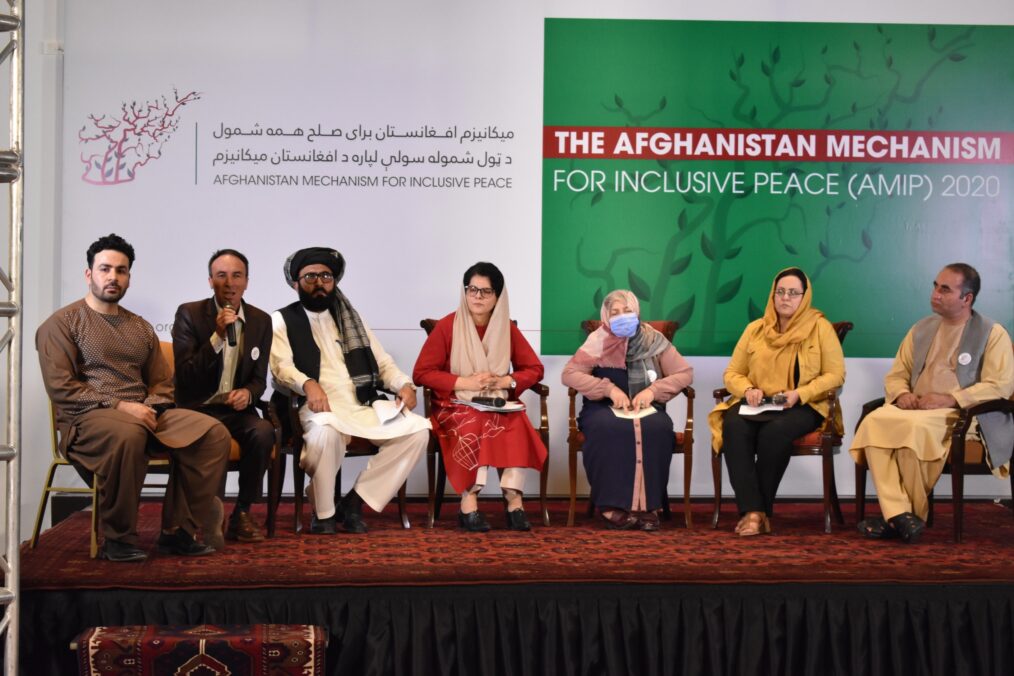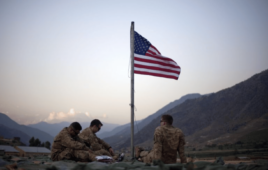
How Will the Intra-Afghan Talks Influence Inclusivity in Afghanistan?
On September 12, representatives from the Afghan government together with Taliban members gathered in Doha, Qatar for intra-Afghan peace talks. These talks were expected to begin in March but were delayed due to a disagreement over a prisoner exchange. At this point in time, it is impossible to say what the outcome of these peace talks will be, neither is that the aim of this piece. Instead, it will focus on a potentially important mechanism and more specifically, inclusivity through civil society.
The Afghan peace process has throughout the years received criticism for not being inclusive. In particular, Afghan women have a history of being excluded from peace talks and political processes, despite their significant involvement in bringing peace and development to Afghanistan. Currently, the Afghan Republic negotiating team includes five women, however, these women cannot be expected to represent all women in Afghanistan, demonstrating why it is important to ensure comprehensive inclusivity throughout the entire process.
Research shows that a mediation process with broad buy-in from society creates better opportunities for a successful implementation phase after a peace agreement has been reached. Civil society builds peace from the bottom up and may serve as a bridge between the population and the stakeholders around the negotiation table. The civil society contributes to building legitimacy for the peace agreement and for the process as a whole.
In Syria, civil society has made important contributions to the intra-Syrian peace talks through the Civil Society Support Room which is a platform where Syrian civil society actors can come together to influence the political process. In Cyprus, civil society plays an important role in resolving problems between the two Cypriot communities, through initiatives such as the Cyprus Dialogue Forum. Moreover, civil society works with local peace committees in Zimbabwe, trauma healing in Bosnia, and peace education in the school curriculum in Côte d’Ivoire; demonstrating the focus on ‘everyday peace’ which is crucial as society moves beyond the peace talks.
The Afghanistan Mechanism for Inclusive Peace (AMIP)
The AMIP came about on the request from the Afghan civil society, who wanted a structured and sustainable mechanism for inclusion, complementing the existing peace process. The mechanism is currently implemented in partnership with the Swedish International Development Cooperation Agency and the Folke Bernadotte Academy and it is funded by the European Union through the EU Afghanistan Peace Support Mechanism.
The idea of the AMIP was to provide a pathway from local, cultural and religious leaders, women, youth, and victims across the country, to the negotiation table. In addition, one objective was to protect the gains that the country has made over the past 20 years, including the challenges with regard to women’s rights. The AMIP was formally established in March 2020, after the publication of the “Living Principles”. They were written using key documents from the past three years on peace in Afghanistan and from consultations with over 150 civil society representatives, including 17 Afghan diaspora representatives. They are supposed to serve as a guide for the negotiations teams as well as third parties with regards to essential issues, showing one example of how the AMIP works to feed into the peace talks.
The work of the AMIP includes collecting and analyzing data on public perceptions such as surveys and polling and they work actively with engaging members of marginalized and minority communities. Moreover, they offer several ways of connecting with the mechanism, including consultations, direct contact, a multilingual digital platform, texting and voicemail service and directly through the regional offices with a country-wide reach and a presence in provinces and districts across the country. To ensure inclusivity and that the work is not “Kabul-centric”, the mechanism has seven regional nodes/hubs that connect to 34 provincial networks which in turn connect to the district level.
Is the AMIP the solution?
There is an awareness of the correlation between inclusivity and sustainable peace, and reverting back to civil society’s role in a peace process, one could argue that the AMIP could have a vital impact if implemented in a comprehensive and effective manner. Nevertheless, it is important to note that if the conflict parties are unable to resolve their issues, “civil society inclusion cannot substitute for a process in disarray”.
As a final note, regardless of what happens with the current peace talks, this mechanism could still fill an important function of bringing together and raising the voices of the Afghan people in their quest and preparation for peace.



